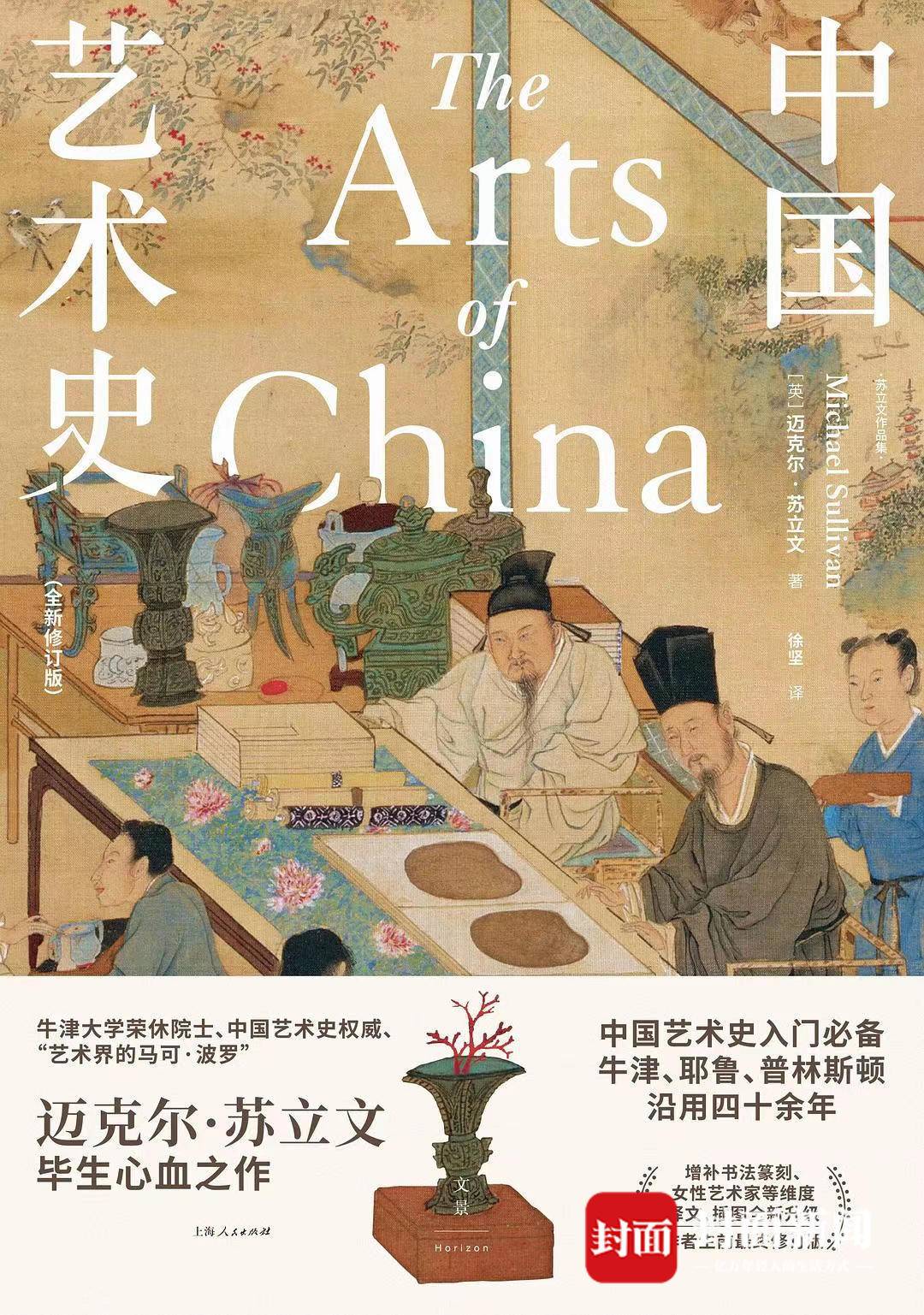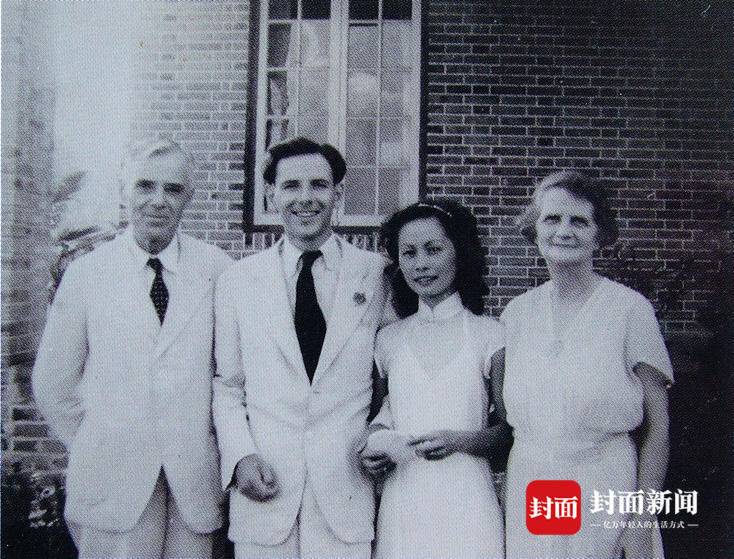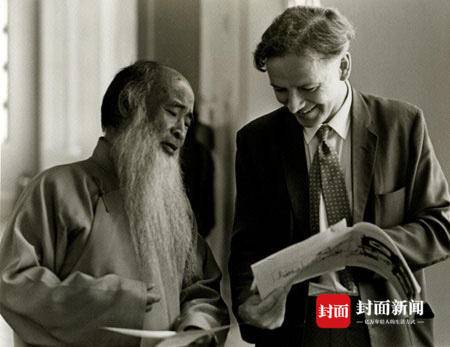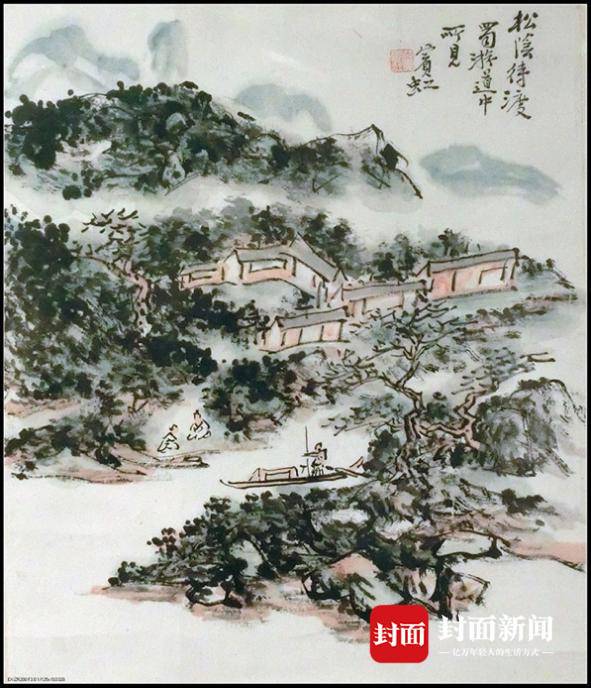"Art of Art Marco Polo" Su Liwen's classic "History of Chinese Art" in the Chinese version of the Chinese version
Author:Cover news Time:2022.07.30
Cover news reporter Zhang Jie
There are a lot of Chinese art in the world, and there are no lack of scholars who have studied in the academic circle. Professor Michael Su Liwen (1916-2013) is one of them. Su Liwen, the director of the East Asian Fine Arts Department of Stanford University and Professor Rongxiu of Oxford University. He has long been committed to introducing Chinese art to Western readers for a long time. He has not only achieved outstanding achievements in the professional field, but his legendary life is inseparable from Chinese art. Due to the dedication of the research and dissemination of Chinese art throughout his life, Su Liwen is known as "Marco Polo in the art world".
In the late 19th century, with the outflow of Chinese cultural relics and artworks, European and American countries' research on Chinese art history has also developed. Through the research and translations of scholars such as Zhai Lisi, Xi Longren, Futaisen, etc., the research field of Chinese art history was initially established. However, there are still some shortcomings at this time, which remains to be repaired and improved after scholars. After World War II, scholars continued to promote the study of overseas Chinese art history. They actively interacted with collectors and scholars from various places, and surpassed their predecessors in terms of language ability and masterpieces and literature materials. Su Liwen and Gao Juhan, Fang Wen, Fu Shen and others together became the representatives of this generation of scholars.
There have been 8 English versions so far
He has been regarded as a prestigious school to learn Chinese art history textbooks
The first edition of Su Liwen's book "History of Chinese Art" in 1961, with different historical periods of China as a clue, according to different categories such as utensils, painting, calligraphy, architecture, etc., reflects the panoramic view of Chinese art from the Stone Age to the beginning of the 21st century. There are 410 high -definition illustrations, showing the art treasures of all ages. Since the first edition of the book in 1961, it has repeatedly republished and has become a textbook for Chinese art history of many universities such as Yale and Princeton. The historian of art and the University of Chicago, Wu Hong, evaluated it as "the most comprehensive and refined entry readings for learning the historical process of Chinese art."

In June 2022, the newly revised "History of Chinese Art" was launched by Shanghai People's Publishing House · Century Wenjing. This is the last version of the author Michael Su Liwen's last revision before his lifetime. Translation and illustrations have also been fully upgraded.
"History of Chinese Art" has been updated many times in decades, and there have been eight versions of the English version so far. On the one hand, Professor Su Liwen insisted on the "bottom line" of the study of the work itself, and always used the writing framework of the times and types to introduce Chinese art works as comprehensively and clearly as possible. On the other hand, with the progress of research, method transformation, and perspective, this book will absorb the latest results and fulfill the content of the academic community in each version of the update. The new revised version launched by Wen Jing this time is based on the latest English version of Su Liwen's life. Among them, the research results of calligraphy engraved, female artists and contemporary art have been greatly added. The update of this Chinese version also revised the translation, and improved the quality of nearly 100 illustrations in the book. The reading experience has been improved in an all -round way. Professor Su Liwen woven the picture of Chinese art development with his comprehensive vision and meticulous writing. Regardless of the beginner or enthusiast of Chinese art history, it is a reading book that cannot be missed.
Anti -Japanese warfire associated with China
Meet artists such as Zhang Daqian in Sichuan
Su Liwen studied architecture at the University of Cambridge from 1936 to 1940. Shortly after graduation, 24 -year -old Su Liwen, as a volunteer of the British Branch of the International Red Cross, was sent to the Chinese people to help the Chinese people. Su Liwen met Wu Baohuan (later changed to Wuhuan), who was also a volunteer. The two quickly fell in love, and later became husband and wife.

In 1943, Su Liwen and Wu Huan (two in the middle) were married
In 1942, under the recommendation of Wu Huan, Su Liwen served as an English assistant of Zheng Dekun, a professor and director of the Museum of Huestan Xiehe University, and the director of the Museum, and met many artists who gathered in Sichuan because of the war, including Zhang Daqian, Wu Zuoren, Huang Binhong, and Ding Cong, Ye Qianyu, Guan Shanyue, Pang Xunyu, etc. Su Liwen, who studied architecture, has since embarked on a long journey to study Sinology and research and collect Chinese art.

Su Liwen and Zhang Daqian (left)
After the victory of the War of Resistance Against Japan, Mrs. Su Liwen returned to Britain. He was deeply associated with Chinese art, and chose to go to Oxford University to continue learning the history of Chinese art. In 1950, he received a scholarship, went to Harvard University for a PhD, and then continued to complete post -doctoral research. The study of Chinese art history was not learning in Britain and the United States at that time. Su Liwen's study and life was quite difficult. Wu Huan also had to go out to work to support home use. His wife not only supports him in life, helps him cross the gap between language, but also allows Su Liwen to have a deeper understanding of Chinese art and culture through his own cultural accomplishment.

Huang Binhong from 1947-1948 to Su Liwen's "Songyin Beating"
While studying ancient Chinese art, Su Liwen continued to care about modern art. When he returned to the UK at first, he also brought information about modern art accumulated in several years, but the box was unfortunately lost. Pang Xunxuan helped him collect information to Chinese artists and send it to the UK. Huang Binhong, who hadn't met with him, also sent a small painting after hearing.
The ultimate crystallization of these efforts was "Chinese Art of the 20th Century" published in 1959.Su Liwen once said, "In the 1950s to the 1970s, the West had almost no interest in Chinese art." This book was the only Western language narrative in this subject for a long time after publishing.In the 1980s, Su Liwen returned to Oxford University in the seventh year of the year, and was subsequently rested as an academician of St. Catherine College, but he did not stop working.Since the 1990s, several main works of Su Liwen have been translated into Chinese one after another, and have published lectures and participated in discussions many times.
Wu Huan, who was accompanied by Su Liwen for 60 years, suffered from Azheimer's disease in his later years. In addition to participating in academic activities, Su Liwen held a heavy responsibility of taking care of his wife until she died in 2003.Ten years later, in September 2013, the 97 -year -old Su Liwen died in the UK, and more than a month ago, he also personally participated in the launch of the "20th Century Chinese Art and Artists" at the Shanghai Book Fair.
(The pictures are provided by the publishing party Century Wenjing)
- END -
Just reported!June 21st, Hebei New Crown pneumonia epidemic situation
The latest notice of Hebei Health and Health CommissionAt 0-24:00 on June 21, 2022, there were no confirmed cases of new local new coronary virus pneumonia in Hebei Province; there were no new local i
Free small gifts, high rebate returns high?Police: Pay attention to prevent new pension fraud!

Xinhua News Agency, Xining, July 9th (Reporter Li Ning) Freely distributed small g...